
Nature Therapy from the Contemplative Garden
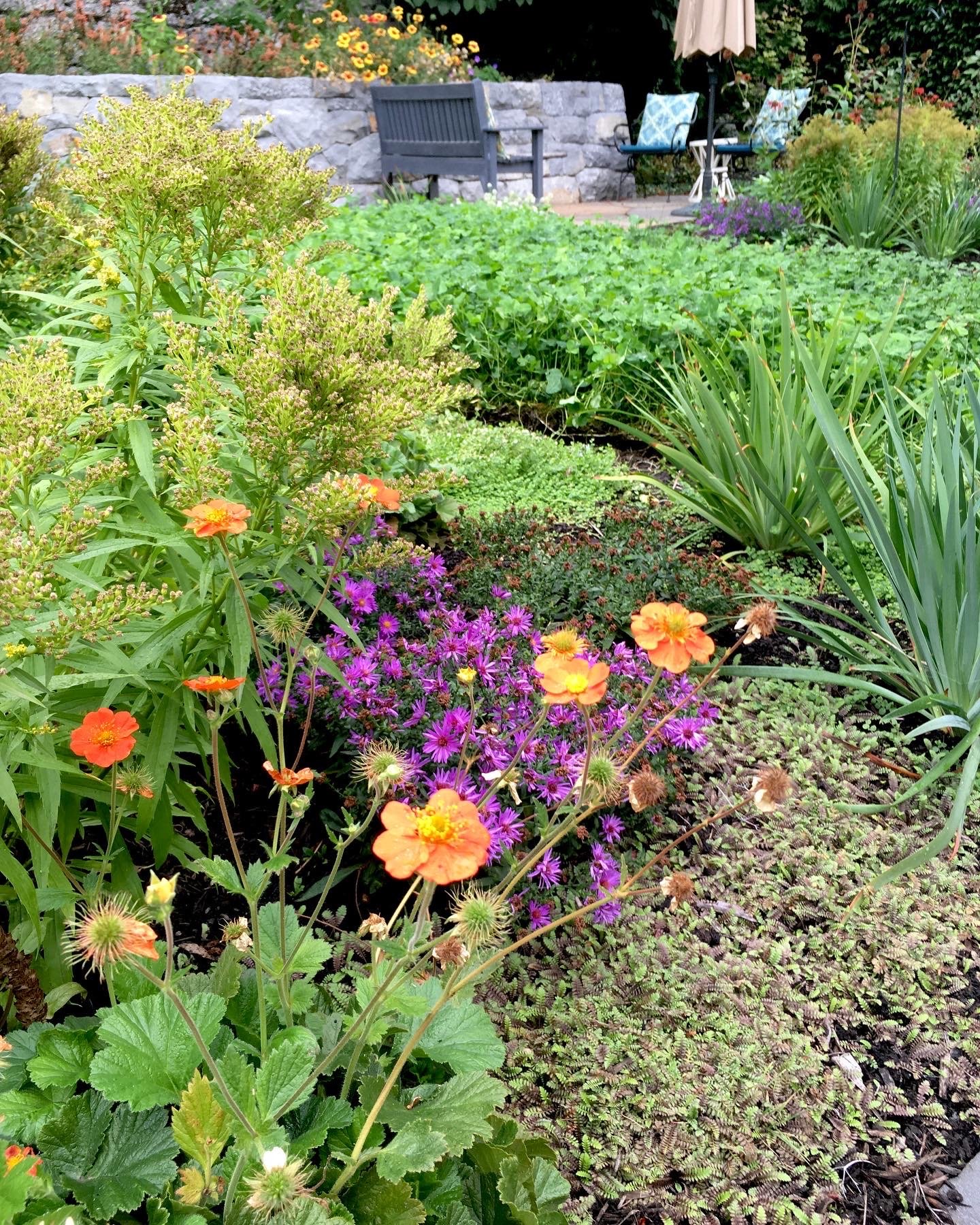
Contributor
- Topics: Nature is Good For You
Winter 2022
Women’s hushed morning voices mingled with crashing waves and chattering crows. “The kettle’s still hot.” “Can you pass the honey?” Whoosh, crash, caw, caw, caw. Crawling through the porthole off the top of an ocean-liner-styled bunk bed, I met Heather’s sleepy grin. Seven of us were at the coast for a weekend of togetherness and conversation. We made heaping salads, weighed in on the recent book we’d read together, and took long walks at low tide.
I’m honored to have such dear friends and I adore all our conversations. But, I found myself drawn to the feather reed grass (Calamagrostis x acutiflora) as it crackled and popped, its leaves drying fast and sudden with the odd heat of the late summer wildfire season, and to the lithe limbs of the Pacific wax myrtle (Myrica californica), commenting to whomever was near about how lovely and well placed it was. Later, descending the stone stairs together, green scent between my palms stopped me again from the ongoing conversation. Jo, made to stop behind me, asked what the plant was. The name ‘native Western mugwort’ (Artemisia ludoviciana) spilled from my lips a moment after Artemisia rose to mind, the Latin an inner language of love I have with plants. “We can put it under our pillows for deep dreams tonight.”

As an introvert, escaping from social togetherness, even briefly, is essential for my well-being. The smartly placed plants around our rental house offered me the renewing touchstone I needed to feel grounded. Stories and idle chatter pull focus into past and future, shifting context away from the time and place where I stand. Paying attention to plants, and to the creatures that perch and crawl on them, roots me in my body and allows even my extroverted friends a renewing opportunity to breathe into the present moment.
If you’re like me, seeking these grounding moments on vacation, how much more important are they during your working days of hustle and productivity? Gazing away from your computer screen out your office window to take in the flutter of autumn’s final maple leaves, pausing with arms full of groceries to admire bees on lingering aster blooms near your front door, or fully sitting in the garden and letting the weight of work slide away with your gaze into the green—these are the moments you can plan for when you mindfully design your garden.
Gardens designed for contemplation renew your soul and connect you to life, to nature, to the bigger pulse of existence. What does it mean to plan your home grounds deliberately, with a sense of the sacred, and attention to the transpersonal? Imagine a flash of wing or the sway of a seed stalk pulling your gaze into your garden, softening your face. There, the scent of rain and cedar shift your buzzing mind further. Embracing layers of green, brown, and gold surround you—you are immersed. You feel the boundaries of your self merge with nature.
To create your own contemplative garden, consider senses, species, and scale in the design.
Plant to engage all your senses
Just as the sound of the feather reed grass and the scent of mugwort comforted me at the beach house, it’s the sensory experiences of plants that will connect you to nature in your garden. Recall the pleasure of burying your nose in a rose—aroma washing away worries of the past and future, touch of petals like a kiss bringing you to the present, beauty of form fostering awe. This is a classic example of how engaging your senses with plants transforms your mood.
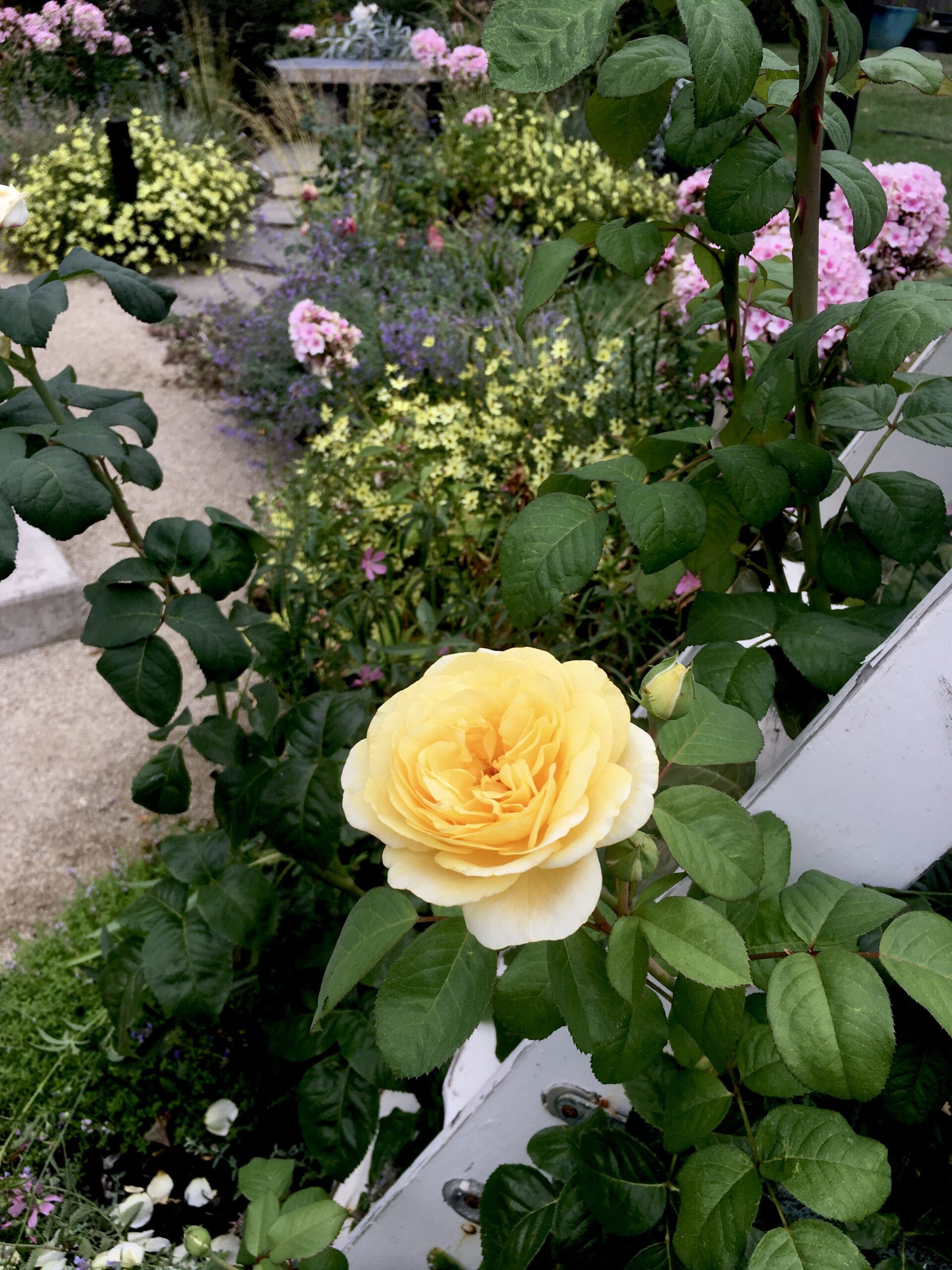
Another less common example comes from a day in my garden years ago, when a friend stopped mid-conversation to lean towards a motherwort (Leonurus sibiricus) in full bloom. Marla, who is legally blind, could hear the plant buzzing with bee life and was delighted to discover its sound. Her joyous laughter wove with the bee speak, spreading delight.
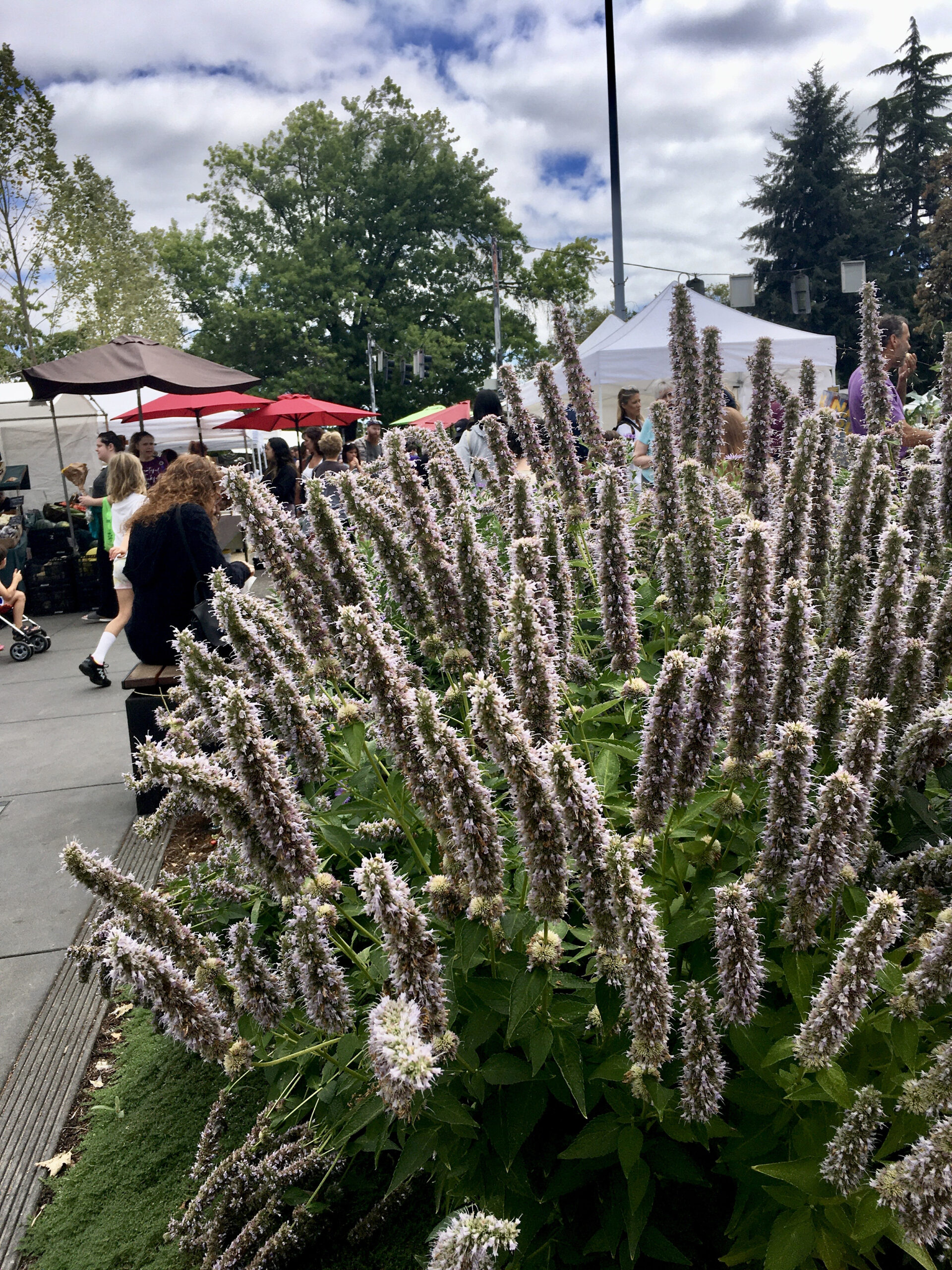
Then there’s the curious experience of airborne scent whose source remains a mystery. Many passersby look up from their phones in fall when the silverberry (Eleagnus x ebbingei) near my sidewalk is in bloom. Noses cast about in wonder. The gardenia-like fragrance wafts from tiny blooms hidden in the leaves. The source remains unknown, however I see people walk on a little lighter, a little brighter, from the encounter.
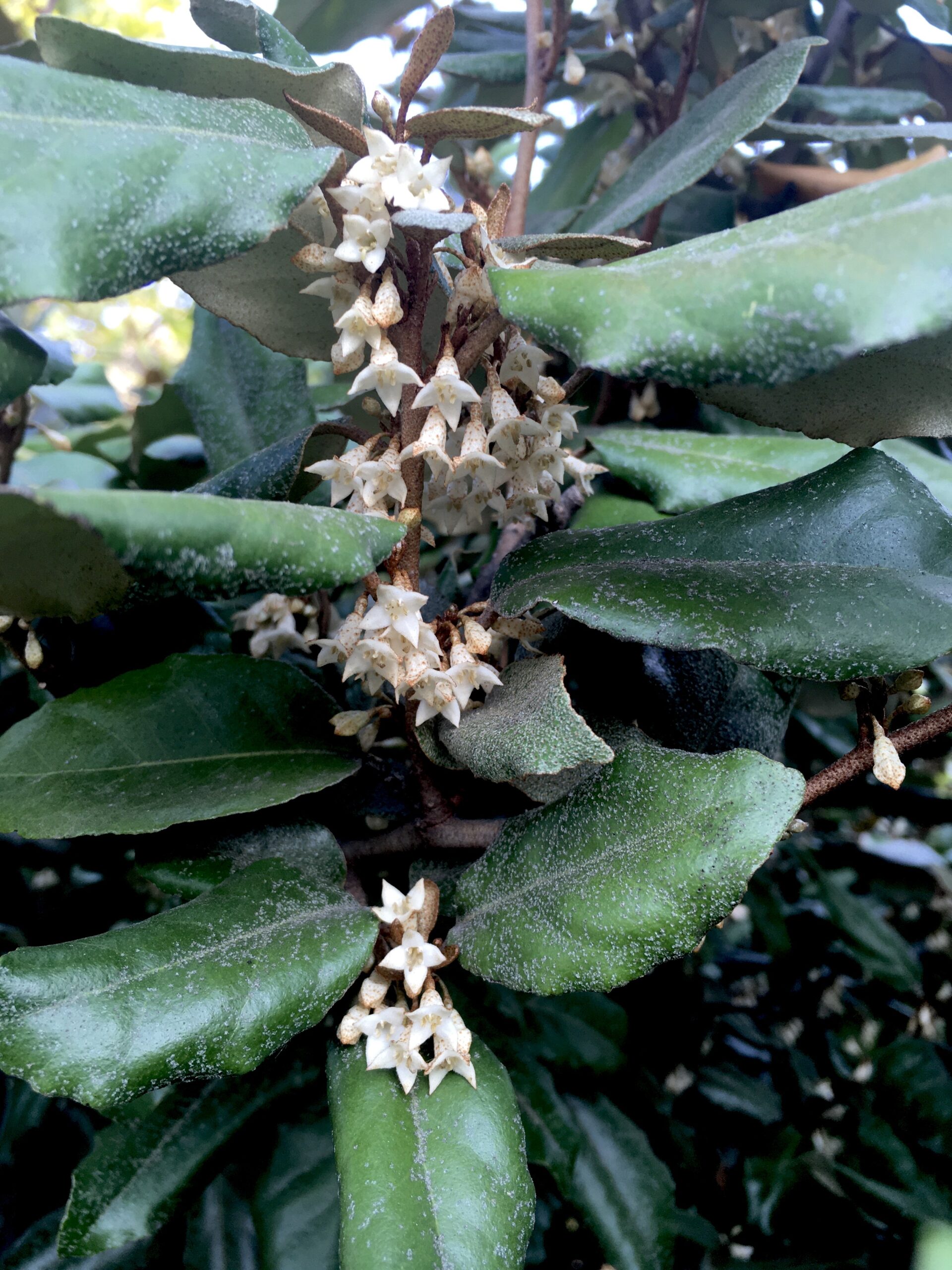
Allow plants with pleasing texture, like weeping Alaskan cedar (Chamaecyparis nootkatensis ‘Green Arrow’) or Pacific wax myrtle (Myrica californica) to shoulder into your path so you can caress them on your way. Include a community of pollinator-attracting flowers to delight with their lively hum of sonic activity. The visual beauty of a lilac (Syringa sp.) that reminds you of your grandmother’s smile, the scent of mock orange (Philadelphus sp.), the dazzle of light and wind in tufted hair grass (Deschampsia caespitosa)—all these sensory connections with plants create meaning and foster compassion. The contemplative garden is rich with them.
Plant a diversity of species
Even though it’s nice to hear how much the neighbors love the new garden, the thing that really made it for Tammy was when her daughter, who originally opposed the lawn removal (“Where will I kick my soccer ball?”) sat with her in the fairytale of hummingbirds, bees, and blossoms and commented that, yes, it a good idea after all. Their front yard had been, like so many others, a near monoculture of perennial ryegrass (Lolium perenne) lawn. Now, successive waves of color emerge from the densely layered planting throughout the year. Some 90 different species of plants grow in the same footprint once home to only a handful.
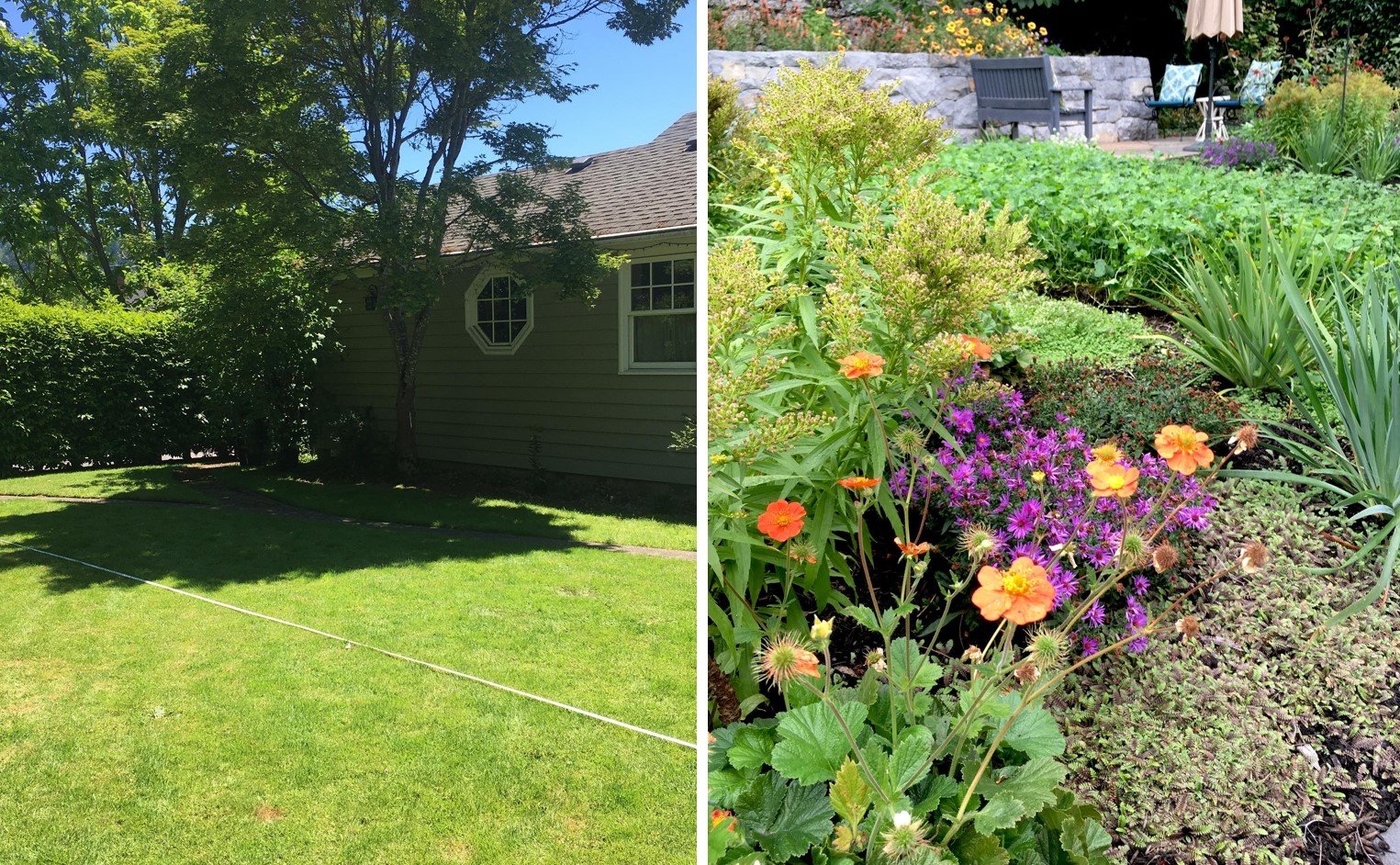
Right: After, the same ground holds avens, goldenrod, aster, iris, brass buttons, blanketflower, hummingbird mint, bee balm, gumweed, lupine, fleur de lawn and so much more (Geum, Solidago, Symphyotrichum, Iris douglasiana, Leptinella, Gaillardia, Agastache, Monarda, Grindelia integrifolia, Lupinus polyphyllus, see Resources for fleur de lawn seed mix). Credit: Leslie Davis
Why does diversity matter? This is the question of our times, for sure, in so many different realms of life. In the garden, it’s abundantly clear that including a diversity of species is wise—for resilience in the face of climate change, disease, and pests; for wildlife habitat; and for weed suppression. The contemplative garden benefits from diversity specifically because it’s more interesting than monoculture. An interesting garden engages you with life throughout the year, nurturing a sense of wonder with the ever-changing cycles, the ebbing of one species making way for the emergence of another.

The first fall after planting a new garden like Tammy’s, I like to return with heaps of bulbs and seeds of native annuals. This is my favorite way to bump diversity up one more notch. There’s always room for bulbs to poke up around the crowns of perennials. Early crocus (Crocus tommasinianus) occupies the ground around late-to-emerge perennials like beebalm (Monarda) and peony (Paeonia sp.). Lilies (Lilium sp.) will grow right alongside the beebalm with complimentary colors in bold forms. For seeds, the native annual Douglas meadowfoam (Limnanthes douglasii) makes a pollinator-attracting mat of yellow and white around the leafy spears and purple petals of Douglas iris (Iris douglasiana). And blue flowering annual globe gillia (Gillia capaitata) contrasts artfully with the citrus tones of Kudos Mandarin hummingbird mint (Agastache ‘Kudos Mandarin’).
When you maximize diversity, you maximize interest. An interesting garden draws you into life and out of your ruminating mind. It gives you something wonderful to contemplate through the changing cycle of the seasons.
Allow for planting beds of generous scale
Even on a large lot, Ami and Jeff find themselves attracted to their narrow side garden. Morning sun angles through the irregular horizontals of their custom fence, illuminating the steam rising from coffee mugs. In the evening, you’ll find ever-busy Jeff finally at rest with a beer in one of two little seating areas. This area used to be muddy and exposed to the neighbor’s peeling siding. A staggered concrete path took care of the mud, and the fence provides screening. What really makes this space a contemplative garden is the generous scale of the planting beds.
Modern landscape design is full of examples where plants are relegated to ultra-narrow perimeter beds, or—if greenery is included within the scene—it’s often only static, sheared balls in beds with no depth and no room to layer. Touting the benefits of ample outdoor living, this style of hardscape-heavy design forgoes the numinous, the imaginal, and the expressive quality of nature.
It’s not hard to have both—cool, modern design with plenty of room for people and big planting beds full of life. In fact, the contrast of geometrically built with wildly lush is incredibly beautiful. The key is to allow for planting beds of a generous scale, even in a small space, and even with modern design.
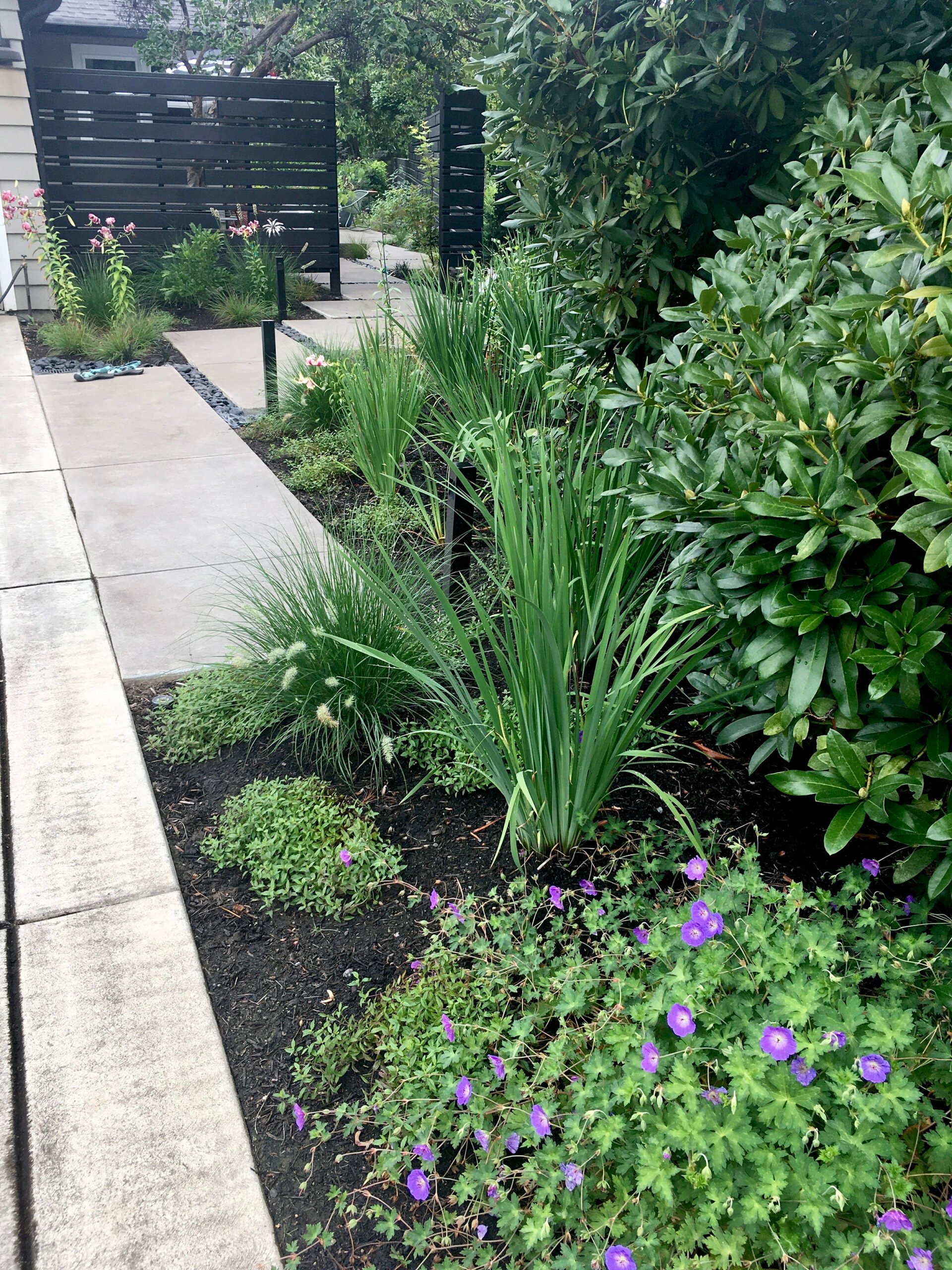
I played around with the squares and rectangles that make up the path of Ami and Jeff’s side garden until I found just the right balance for people and plants. You enter off the driveway where we transformed sodden lawn into a garden of Siberian irises (Iris sibirica ‘Caesar’s Brother’), fountain grasses (Pennisetum alopecuroides ‘Hameln’ and ‘Burgundy Bunny’), and witch alders (Fothergilla x intermedia ‘Mt. Airy’). The beds are deep enough here for a sculpture to find a home amidst the greenery. Through the gateway, a small fountain in the bed to the left babbles, weaving water songs with the scent of daphne (Daphne odora ‘Aureomarginata’) in spring and the sway of Japanese anemones (Anemone x hybrida ‘Pamina’) in fall. Overflowing with astilbe (Astilbe ‘Amethyst’) and penstemons (Penstemon digitalis ‘Husker’s Red’), the beds narrow near the utility room door. Continue on as the space widens sympathetically with a ten-foot-by-seven-foot seating area embraced by Midwinter Fire dogwoods (Cornus sericea ‘Midwinter Fire’), beautyberry (Callicarpa bodinieri ‘Profusion’) and akebia (Akebia quinata) softening the fence, and Rozanne geranium (Geranium ‘Rozanne’) spilling onto the patio. Pots extend the planting beds into the pathways with height and seasonal color.
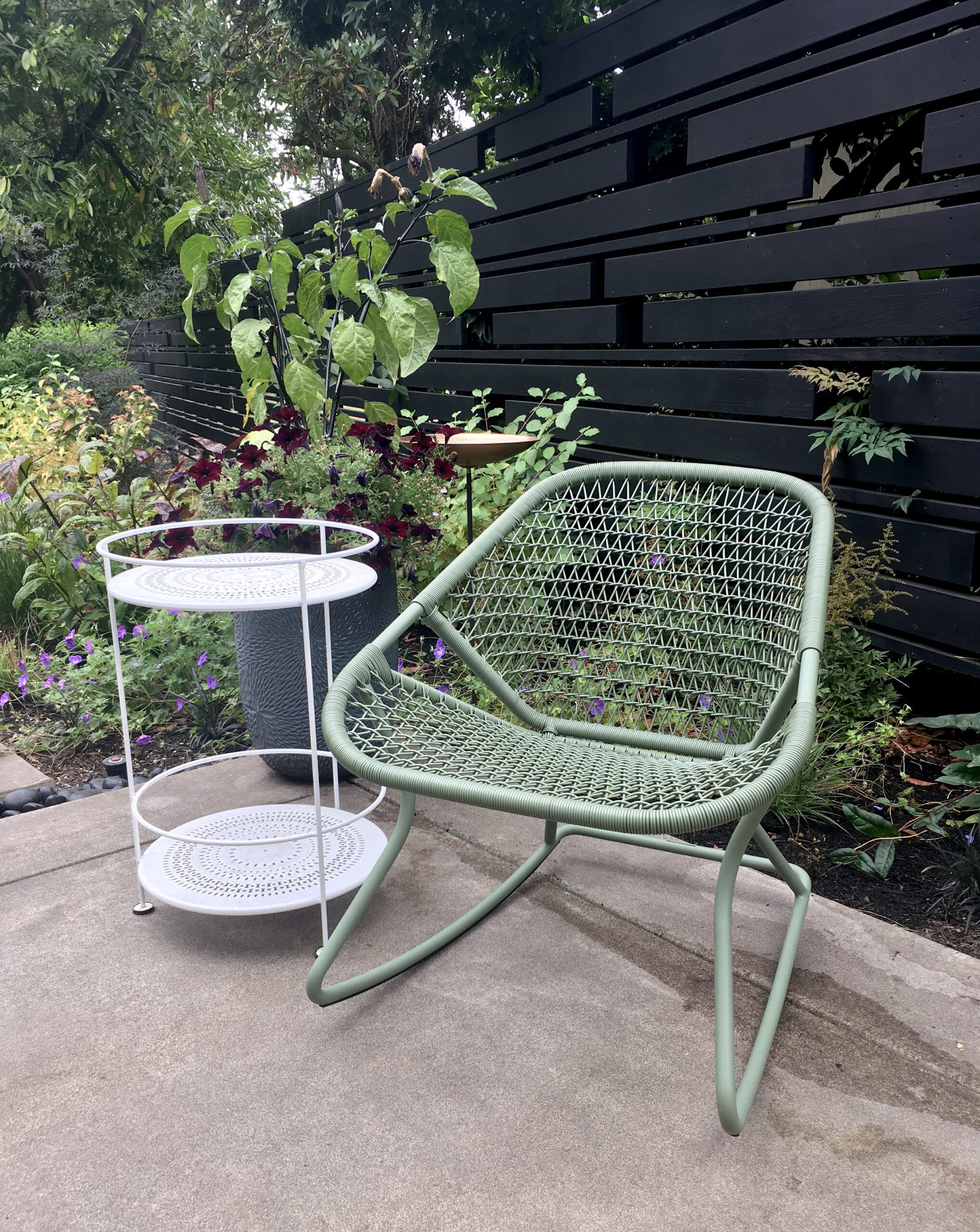
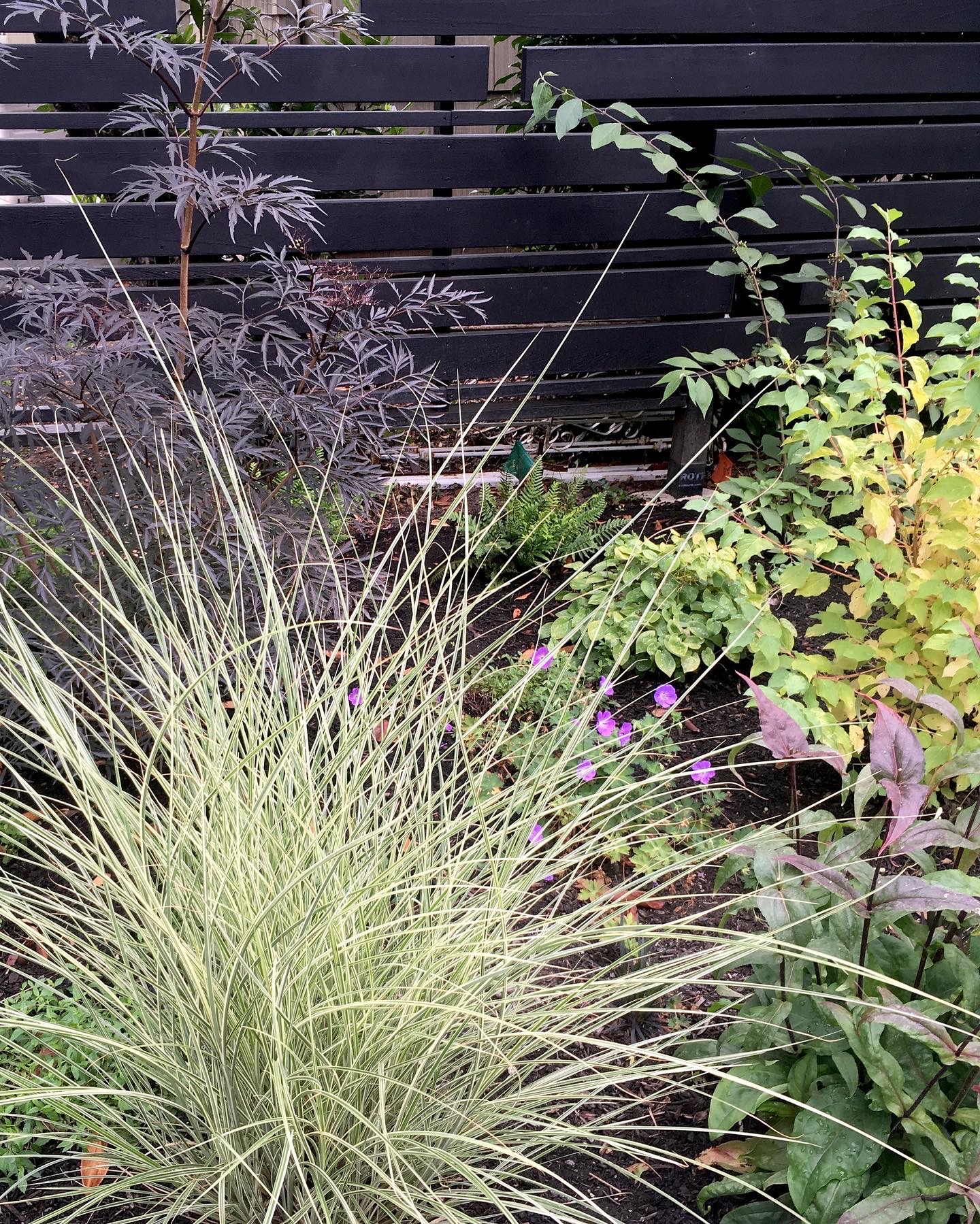
Traditionally, it’s narrow foundation beds and too much lawn that need to be adjusted. Whether your style is modern or traditional, make bigger beds. The contemplative garden offers intrigue and mystery through depth and layering of plants, and this calls for expansive ground dedicated to growing.
Conclusion
To create a contemplative garden, focus on sensory experiences, species diversity, and generously scaled beds. Your need for peace at the end of a hard day could shift from cracking a beer or mindless scrolling to a moment of immersion in the healing complexities of nature. Whether you have a disciplined practice of meditation or not, a garden designed for reflecting will reduce your stress and lift you from grump and gloom.
Consider too, the well-being of beetle and bee, of goldfinch and garter snake. Robin Wall Kimmerer, author of Braiding Sweetgrass (2013), reminds us that all flourishing is reciprocal. When you make a garden that nourishes your well-being, the more-than-human inhabitants benefit equally. And doesn’t knowing that fill your cup even more?
Resources
PT Lawn Seed offers Fleur de Lawn seed mix and other lawn alternative mixes that include a diversity of species.
Robin Wall Kimmerer. 2013. Braiding Sweetgrass. Minneapolis: Milkweed Editions.
Share:
Social Media
Garden Futurist Podcast
Most Popular
Videos
Topics
Related Posts
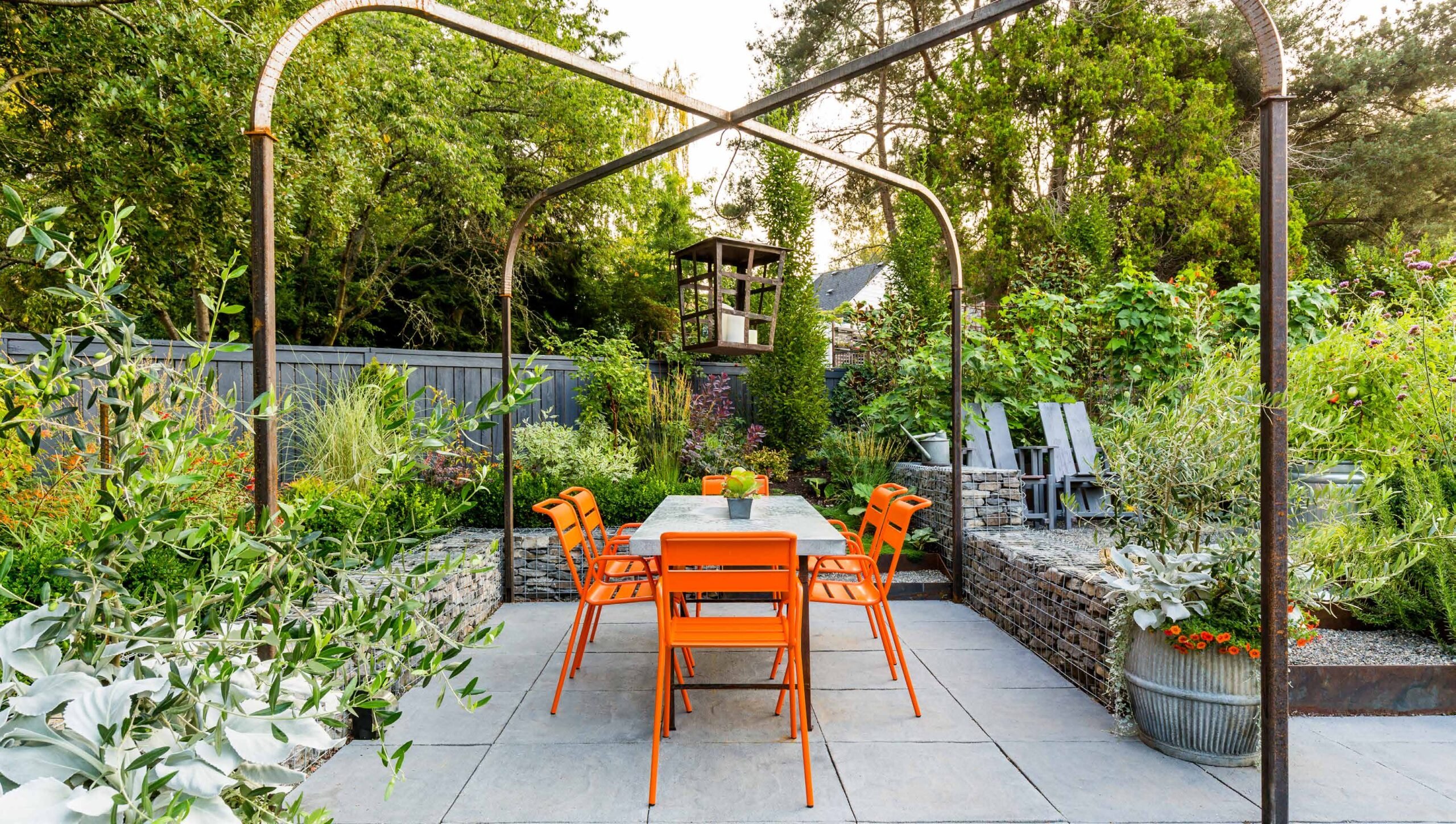
Design Futurist Award Announced: Committee Shares Vision
March 8, 2023 At Pacific Horticulture, we believe that beauty can be defined not only by gorgeous plants and design, but also by how gardens

Portland Parks’ “Nature Patches”
Winter 2022 Nature is so beautiful when left to its own devices, yet crisply manicured lawns remain a status symbol. This is true in Portland,
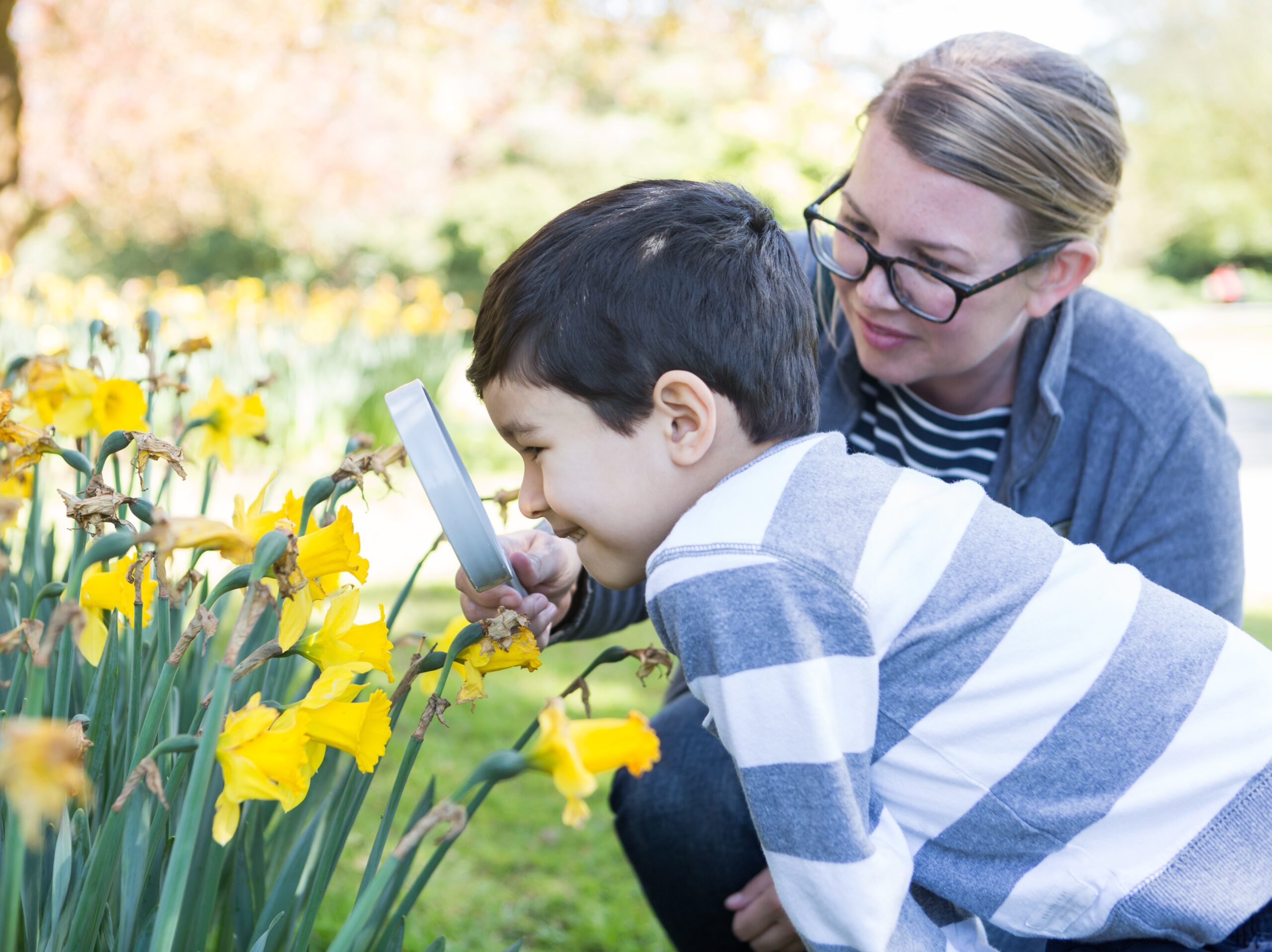
January Showers Bring February flowers…
Fall 2022 It may not quite have the same ring to it as the old English proverb, but it has a lot more truth to

Thrilling Humanized Nature in the Anthropocene with Garden Futurist Michael Boland
Fall 2022 Listen to the Podcast Here. The article you are about to read is a little different from our usual podcast transcript articles format.










Responses